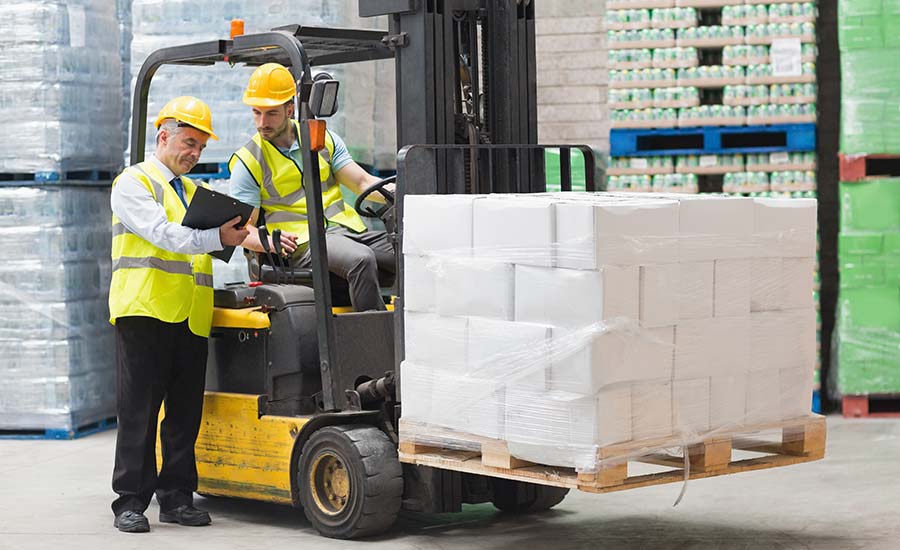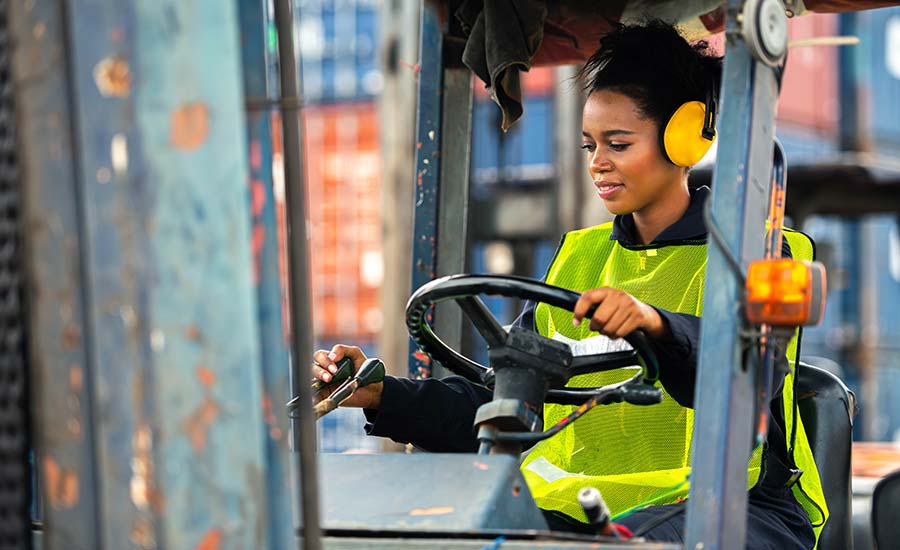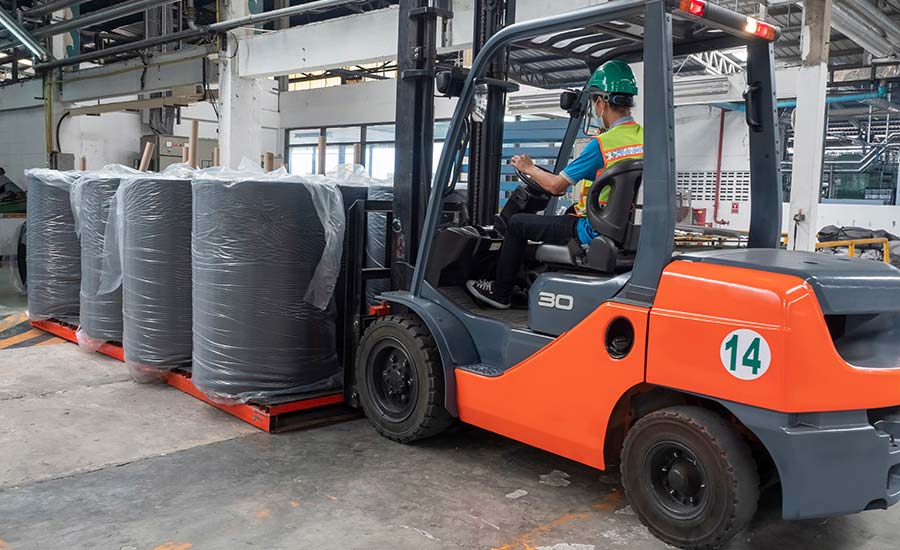
From checking the tires, forks, and electrical safety devices to making sure the battery is charged before use, a detailed preventive maintenance checklist is key to ensuring the safety of forklift operators and preventing damage or costly repairs.
What must be done daily before using a forklift?
We’ve created a detailed forklift safety checklist to follow each day, in addition to a monthly and quarterly maintenance checklist, to keep your industrial lift in good condition and ensure it’s safe for use.
Plus, we’ll explain how you can simplify and streamline your forklift checklists by going digital and using mobile forms instead of paper!
Table of Contents
Need to create a forklift safety checklist?
Try doForms for free!
Why You Need A Forklift Safety Checklist
A forklift safety checklist helps ensure the safety of the operator and helps prevent equipment damage.
Daily forklift inspections are not just recommended, they are required by the Occupational Safety and Health Administration (OSHA).
Forklifts are required to be thoroughly inspected before use, at least once a day. If industrial trucks are used on an around-the-clock basis, inspections must be conducted after every shift.
Only if the forklift is stored and not in use every day are you permitted to omit a daily inspection. However, you are still required to conduct a safety inspection prior to every use.
Operating an industrial lift truck or forklift without proper safety precautions can lead to injuries such as fractures, bruises, and concussions, according to the National Institute for Occupational Safety and Health (NIOSH).
The most common causes of such injuries include:
- Improper operation and use
- Load hazards
- Insufficient maintenance
- Attachments
When handling such a powerful industrial tool, safety precautions and regular inspections are needed to ensure the forklift is functional and damage-free, and to prevent any mishaps.
You need a forklift safety checklist to:
- Ensure the forklift is safe to use
- Prevent accidents
- Reduce downtime due to improperly maintained equipment
- Extend the life of the equipment
- Identify issues that require service

A forklift inspection checklist helps prevent accidents, reduces downtime caused by improper maintenance, and extends the life of the equipment
What Must Be Done Daily Before Using A Forklift
We’ve put together a detailed forklift safety checklist, broken down into visual items, operational items, and additional items to be checked each day, before use.
Visual Checks
Visual checklist items should include:
- Damage: Check the forklift for visual damage, such as dented, broken, or missing parts.
- Leaks: Inspect the forklift for leaks, including oil leaks and leaks coming from the radiator or hydraulics.
- Tires and wheels: Check the tire pressure to ensure tires are adequately inflated, and check for excessive wear and tear, holes, or other damage.
- Forks: Check to make sure the forks and the locking pins are securely in place and not bent or damaged.
- Chains, cables, and hoses: Check to make sure all the chains, cables, and hoses are securely in place and nothing is loose.
- Battery: Check to make sure the battery is fully charged. Inspect the condition of the battery cable and connector. Check to ensure the battery retainer is in its place.
- Guards: Check to make sure that all guards are in place and in good condition. Inspect the overhead, load backrest, gates, and side rails.
- Mechanical safety devices: Inspect all of the mechanical safety devices, including the seat belt, fire extinguisher, name/date plate, and warning labels to verify they are in good condition.
- Operator compartment: Check to make sure the operator controls such as the pedals and steer tiller are in good condition. Make sure the seat locks are in the proper position.
Operational Checks
Operational checklist items should include:
- Power: Check the power to make sure all the indicator lights and alarms are working properly. Then, check the power disconnect to make sure it cuts off all power.
- Electrical Safety Devices: Check the horn, entry bar, audible signals, flashing, and indicator lights to ensure they work properly.
- Steering: Check to make sure the steering moves smoothly and that there’s no binding.
- Brakes and travel controls: Check to make sure the foot brake pedal works. Check the braking and plugging distances as well, first at a slower speed, then as you gradually accelerate. Check the parking brake.
- Hydraulic controls: Test the hydraulic functions to make sure they operate smoothly and observe if there are any unusual noises that may be a cause of concern.
- Attachments: Check the forklift attachments to ensure they are safely in place, particularly the removable parts. Make sure the attachments work properly and check for any unusual noises.
- Limit switches: Check all of the limit switches, including the lift limit, tilt limit, travel limit, and safety reverse to make sure everything works properly.
- Battery charge: Check to ensure the discharge meter is in full green or at least 75% charged before using the forklift. Ideally, charge your forklift battery when it reaches 20-30% and make sure it fully charges every time.
- Wire guidance: Check to make sure the wire guidance functions properly.
- End aisle control: Check to make sure the forklift slows down and stops at the aisle end as it should and check if the alarm works.
Additional Forklift Checks
Additional checklist items should include:
- Labels and markings: Check the nameplates, labels, and all markings to ensure they are in place and easy to read.
- Exhaust system: Inspect the exhaust system to ensure there aren’t any sparks or flames.
- Cleanliness: Check to make sure the forklift is clean and doesn’t contain any dirt, excess oil, or grease.
- Propane tank: Inspect the propane tank to make sure there is no rust or corrosion.
- Operator’s manual: Check to ensure the operator’s manual is present.
- Seatbelt: Check to make sure the seatbelt works properly.
- Capacity load plate: Check the capacity load plate to ensure it is well-fitted.
- Gas levels (for gas-operated forklifts): Inspect the gas levels on gas-operated forklifts before powering up the forklift to make sure there’s enough gas.
- Horn: Check to ensure the horn and reverse buzzer are working.

A daily forklift safety checklist should include visual checks, operational checks as well and additional checks
Forklift Maintenance Checklist
If you use the forklift often, carry out maintenance checks after every 200 hours of operation and make sure to service the hydraulic system after every 600 hours.
Regular maintenance checks can help you extend the life of your forklift and avoid costly repairs.
Monthly Maintenance Checks
Here’s what your monthly maintenance checklist should include:
- Change the engine oil
- Clean the air filter
- Inspect the lift and tilt cylinder
- Inspect the belt tension
- Inspect the spark plugs
- Adjust idle speed and ignition time
Quarterly Maintenance Checklist
Here’s what your quarterly forklift checklist should include:
- Inspect pedals and brakes
- Inspect mast operation
- Inspect the hydraulic oil pump
- Clean the radiator
- Inspect filters, oils, and hoses
- Replace filters (both fuel and hydraulic)
- Drain the water separator
Ready to streamline your checklists?
Try doForms for free!
How To Simplify Your Forklift Inspection Checklists With DoForms
Creating checklists, editing reports, and struggling with cumbersome paperwork is time-consuming, tedious, and can be costly as well.
doForms is a user-friendly mobile software solution for creating, storing, and managing checklists, reports, and other documents using mobile forms instead of pen and paper.
Aside from checklists, you can use doForms to collect all near-miss reports and raise awareness of regular construction equipment machinery maintenance.
doForms features a library of templates you can use, or you can choose the custom option and create your forms from scratch.
All forms and reports are securely stored in a centralized location, so you and your team members can access your documents 24/7 via the doForms mobile app. Whether in a construction field or a warehouse, your employees can use doForms to fill out daily checklists and send reports, with or without internet access.
doForms allows you to:
- Simplify the creation and management of forms and checklists
- Manage your inventory
- Create maintenance reports
- Manage schedules and payroll
- Lower paper costs
- Save time and improve efficiency
For more information, visit our extensive video library for a tutorial on how to maximize efficiency and explore the full potential of our mobile forms solution!
Here’s a glimpse of what you can expect when you switch to doForms:
provider: youtube
url: https://www.youtube.com/watch?v=aAc7s8DWouY
src: https://www.youtube-nocookie.com/embed/aAc7s8DWouY?wmode=transparent&rel=0&feature=oembed
src mod: https://www.youtube-nocookie.com/embed/aAc7s8DWouY?wmode=transparent&rel=0
src gen: https://www.youtube-nocookie.com/embed/aAc7s8DWouY
Wrapping Up On Forklift Checklists
A forklift checklist not only helps protect forklift operators but also helps extend the life of the heavy equipment and allows you to identify potential issues and address them before they turn into costlier repairs.
So what must be done daily before using a forklift?
Comprehensive checks, including visual, operational, and additional checks like construction site preparation checklists, as well as safety checks mandated by OSHA.
With doForms, you can improve your daily operations by streamlining the process of building, storing, and customizing checklists online and offline. Reduce paper costs, keep your forms in one centralized and secure location, and edit, send, and save your checklists for future use.




